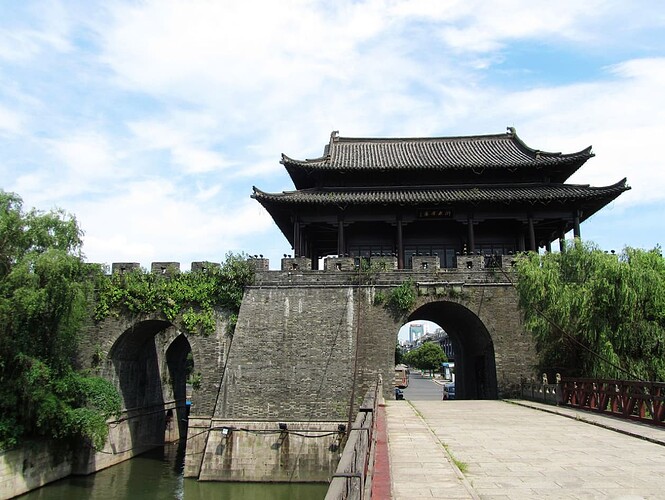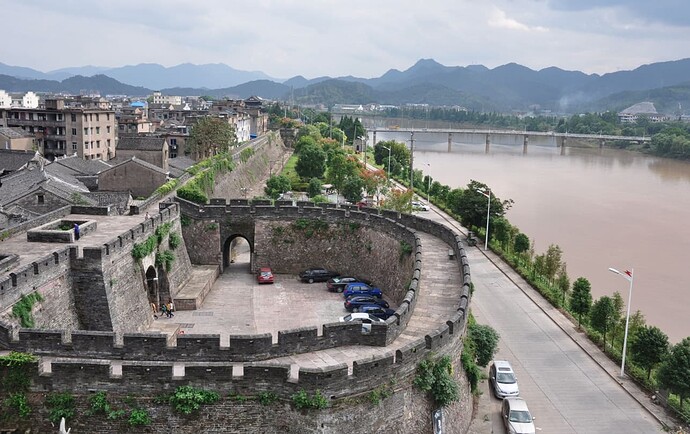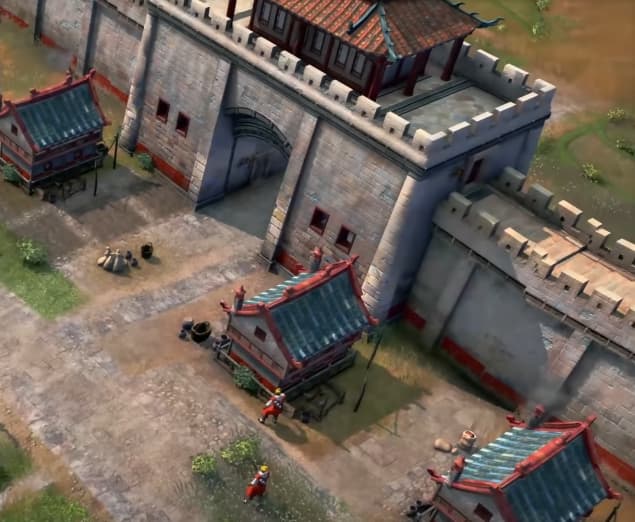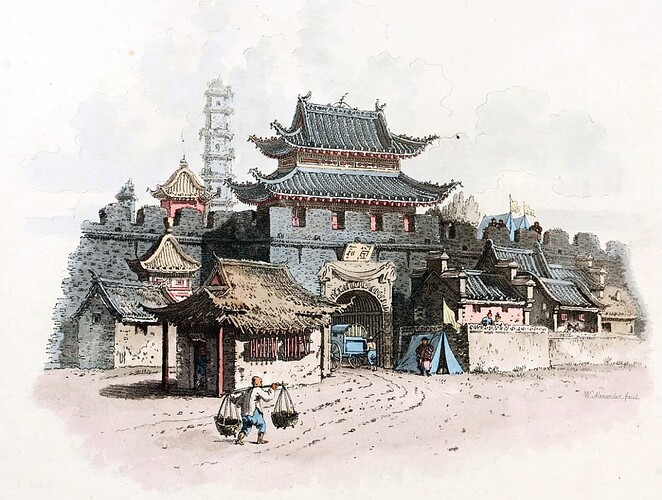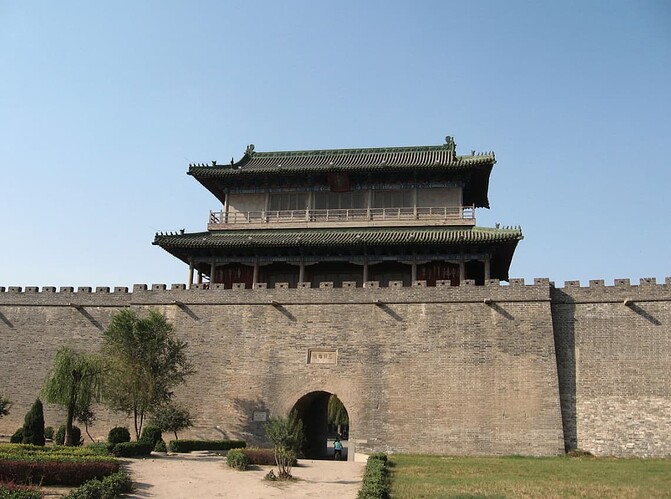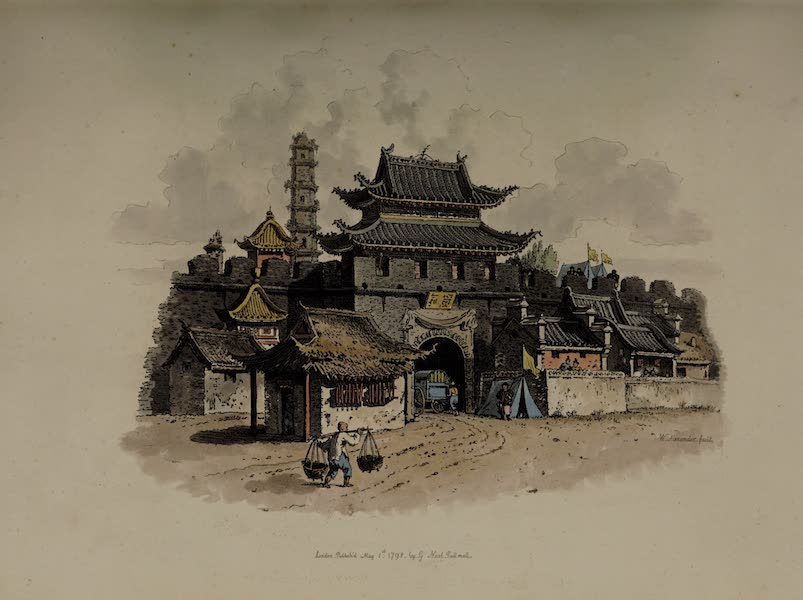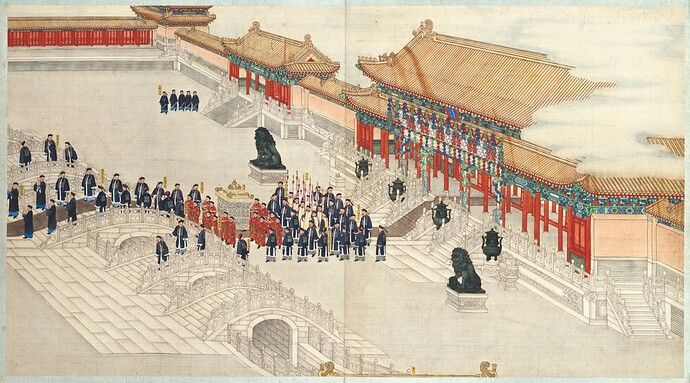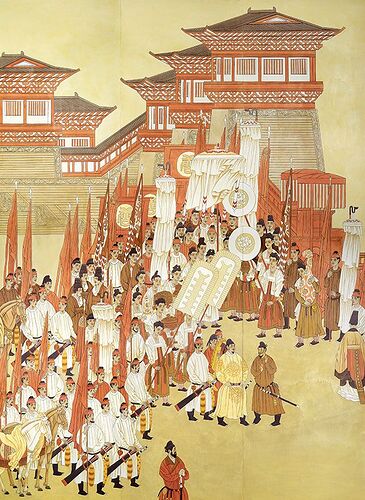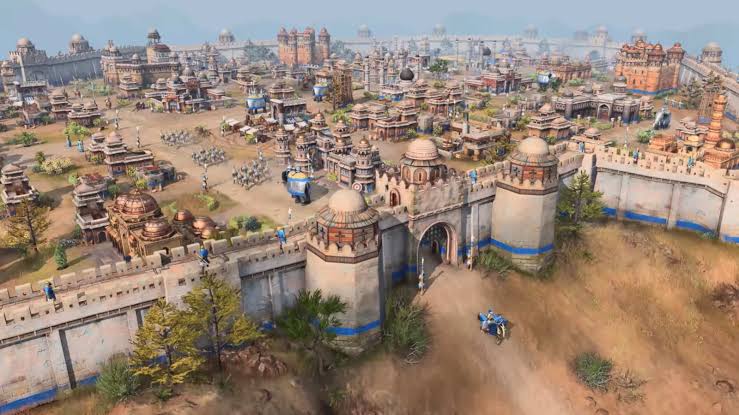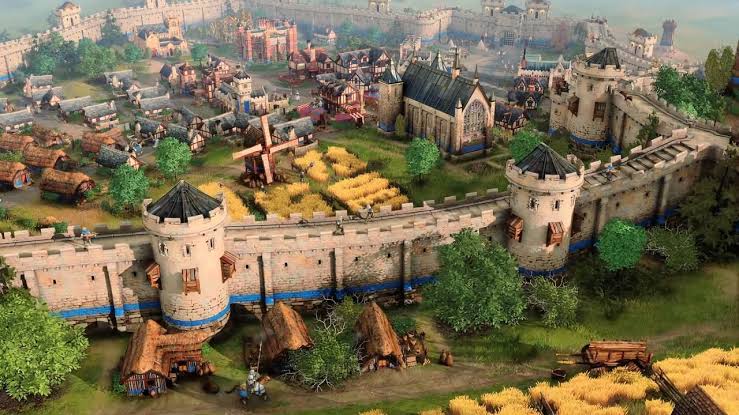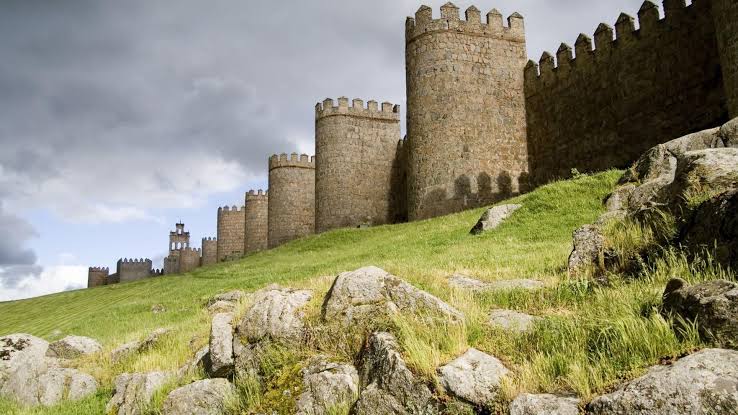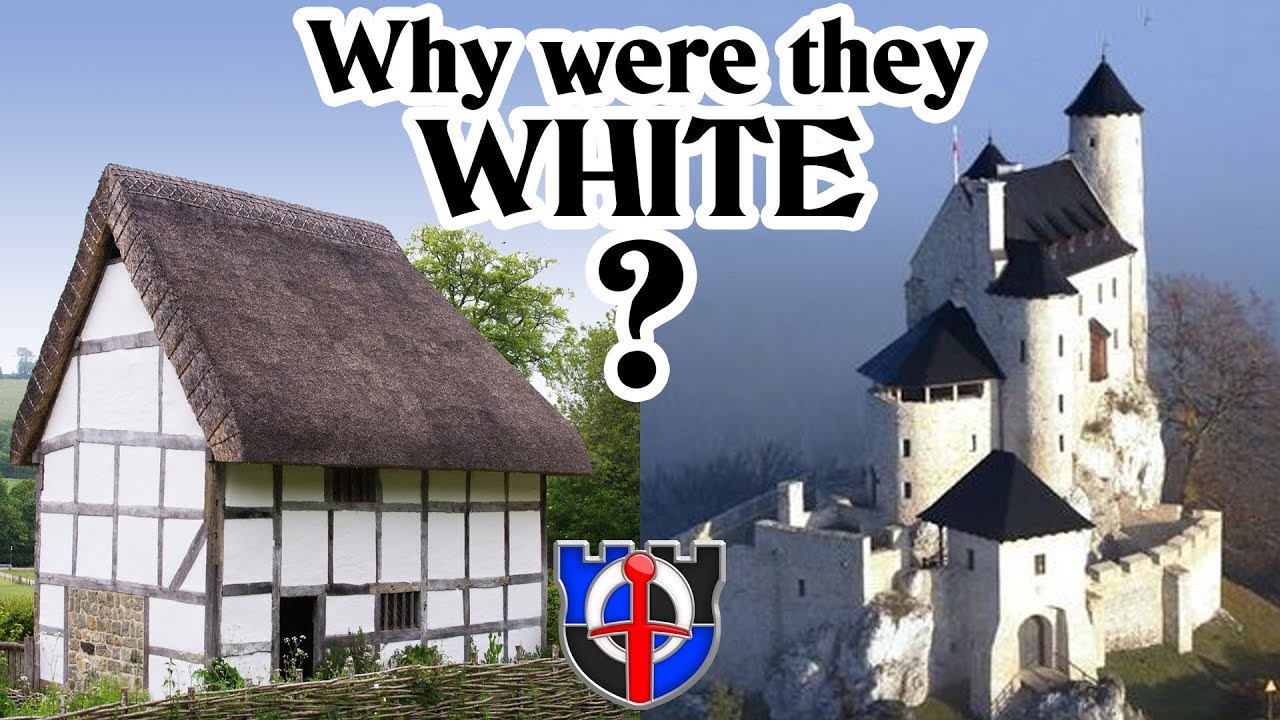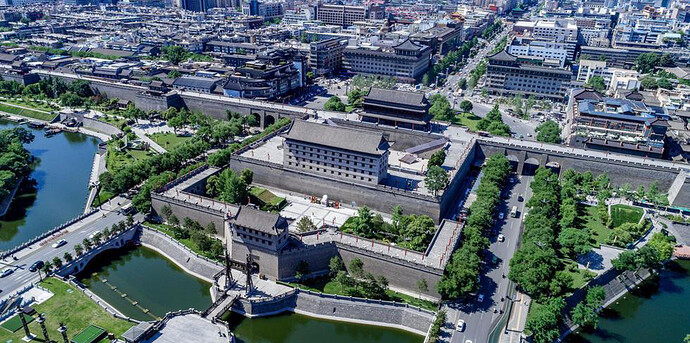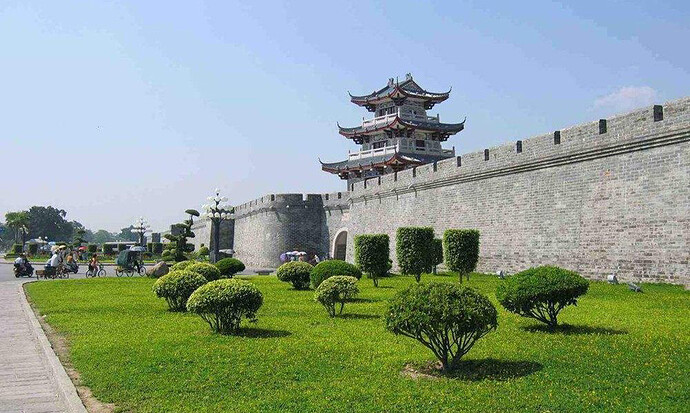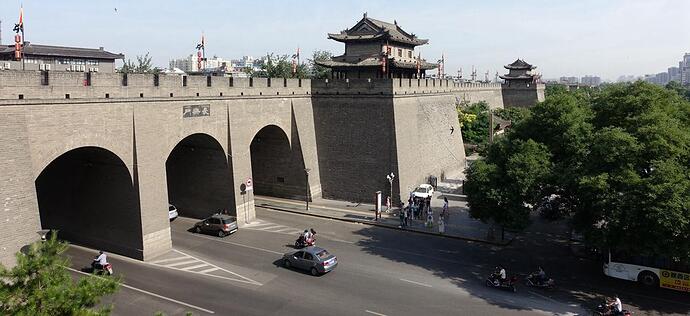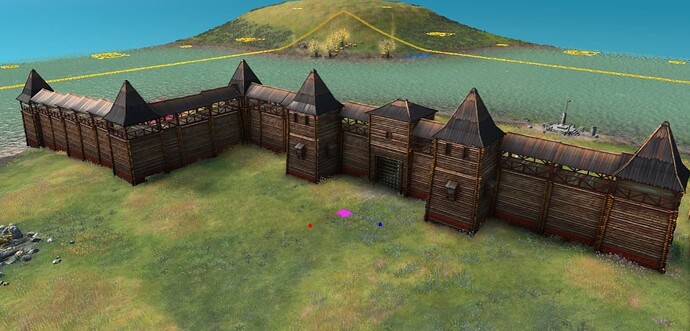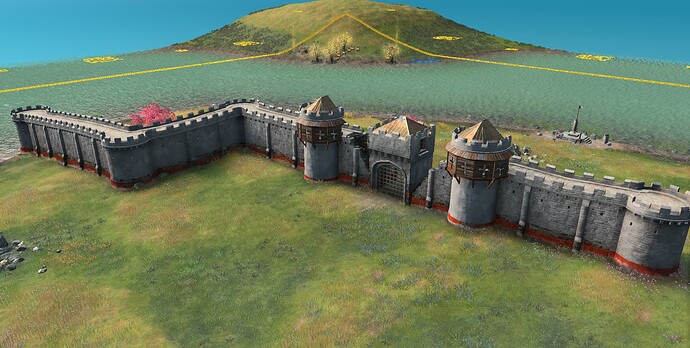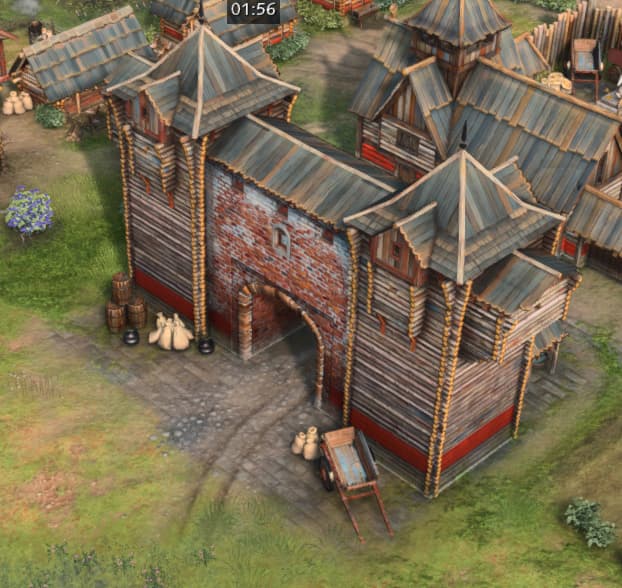Are they not?
clearly not. As you can see the gate houses look absolutely nothing like the AOE IV rendition with much larger tiled roof, and dark grey/black walls and roof. That drawing you posted is a British rendition of the south gate of Ting Hai but the colour is distorted.
As you can see in this photo, the red buildings with gold roof behind the wall and the wall again has the blackish/grey walls with large black roof. As opposed to the white walls in AoE IV and blue, tiny roof. Especially when you zoom out and see the attached towers to the wall which is depicted on none of the pictures. Not even correct according to chinese art
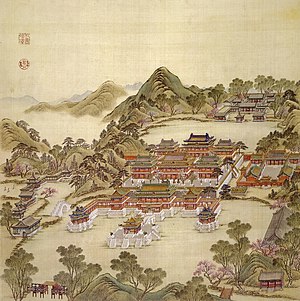
Im specifically talking about the walls not the towers. You should also maybe be looking at the IRL pictures as well.
I don’t understand why you purposefully looked for a badly darkened version of the painting. Here’s the actual illustration in a Museum website: William Alexander (1767-1816) - The Costume of China... / by William Alexander.
There are a myriad of factors for the colours of walls. Even within china wall materials/colours vary depending on the type of local stone used. You also need to take into account that stone walls darken throughout time due to eriosion/weathering. Ultimately the colour doesn’t matter to me as much as the structure, which appears to actually be similar to IRL walls.
During that period, China was famous in using earthen and stone bricks. There is absolutely no reason for earthen and stone bricks to be white, and look like the Delhi Sultunate wall bricks that
Were made of sandstone or marble.
And it looks like the British walls which too were not white because they too were made of stone.
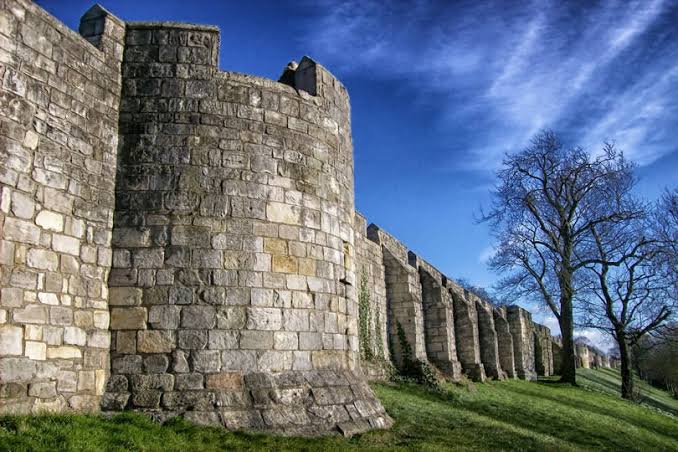
They very often plastered/painted on walls/castles. A lot of what we see nowadays is the result of hundreds of years of erosion.
China isn’t Europe, though.
Plaster was used on many buildings (after all, that’s exactly what those giant blocky red buildings like the Forbidden City gates are) but not on city walls themselves. The long and short of it is that European walls are stone walls and plaster is there to protect those from the elements, while Chinese walls are (almost always) rammed earth walls and the stone (later brickwork) around them is the secondary protective element, just like plaster in Europe.
The walls in the game are definitely not based on Chinese walls, that much is readily apparent, even if Khansa fudges putting it into words, even including pictures of recent drawings as evidence.
The towers on Chinese walls are strictly rectangular in shape (not a hexagon like the ones here), they did not feature elaborate decorative pagoda roofs (much less ones with lacquered green tiles, even), Chinese did not use portcullis (falling metal gate), having never developed that kind of opening mechanism and finally the building on top of the gatehouse is possible, but has the tiles made of a different material than all the other buildings in this architecture set. So either everything there should have orange-colored tiles (it’s the same sort of orange you find in European rooftiles and these were naturally that color in deep southern China)
unless lacquered, or it should be naturally black like the rest of the buildings on display (which turn the black into bright blue, giving it that fantasy flair) with a green outline as Ming gatehouses in major cities would have had according to artwork well into the Qing period.
TL;DR: No, they did not give the Rus’ Chinese walls. All cultures in the game share the same set of custom fantasy AoE walls with customised bastions and gatehouses of highly dubious historical quality.
The practice is seen in japanese fortifications as well.
http://shikkui.net/shikkui-plaster/japanese-castles.html
It however doesn’t need to be all castles that use this type of material. A castle will vary in material according to the region it is in and the materials available. Very often you will find crusader castles build in the middle east made of differently coloured stone to their european counterparts.
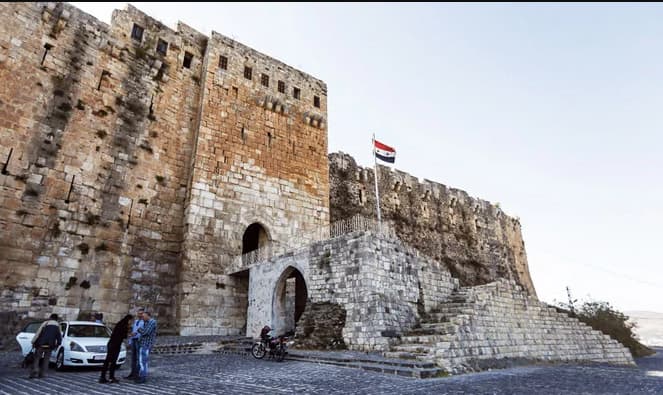
What matters more to me is there is some historical precedent to design them in the way we see ingame. It isn’t immersion breaking or anything to me.
Yes, and if you look at those pictures you will very clearly see not even single square centimeter of that Japanese stone wall is plastered. The plastered part are the wooden buildings and fence walls on top of the stone-encased walls, which is, as I’ve mentioned previously, in line with the fact those stones served the same purpose as plaster. And since the smaller rammed-earth walls weren’t lined with stones, they were plastered with shikkui instead.
What matters more to me is there is some historical precedent to design them in the way we see ingame. It isn’t immersion breaking or anything to me.
Same here. The other points I’ve outlined in the previous post are what put me out of it because those things define those walls as obviously European. When the game already has things like normal door gates (used in wooden walls) they could have given to the Chinese instead. Plastered or not, those walls are unmistakably a slightly gameified portrayal of West European walls which is a problem, but one shared by all cultures in the game and thus a conscious decision of developers to disregard historical accuracy with that particular game element, most likely to facilitate easier recognition of the upgrades like hoardings and such.
I feel like everytime someone critiques this game you go on a Google journey just to try and prove them wrong. And when you find something, you are like “ah HA!” And attempt to use it to add a paintbrush through the whole thing.
First of all plastering or turning building white was a sign of prestige. NOBLES did it to their homes and castles. And not ALL castles did this. With many castles staying as stone. Especially not a ENTIRE WALL surrounding whole CITIES. No one was THAT extravagant. Paint was not $2 at the paint shop in the medieval ages and it was not easy to cover stone walls either. And Stone walls had so many nooks and crannies due to battlements that it would be the most useless expenditure for stone or earthen walls.
This was common in castles in JAPAN but most of their castles were not made out of STONE. Hence why several of their castles would burn down due to fires or fall apart due to earthquakes and require to be rebuilt. Especially during WWII when the US burned the Japanese country alive.
However again, plastering WALLS was not a feature in JAPAN, KOREA , NOR CHINA. When walls were PAINTED it was on WOOD.
Anyone who knows ANYTHING about China could look at the AOE IV rendition and say that is not China, it is just general asian civ. China is so famous for its red and yellow renditions. Even the poor Chinese didn’t have purple or blue tiled roof as depicted in AOe IV. So to use that excuse for Chinese architecture is exactly that. A flawed attempt at googling an opposition because for some reason you feel the need to protect the lack of authenticity and laziness of this game.
“CHINESE BUILDINGS USED BRIGHT COLOURS: VERMILION FOR PILLARS, YELLOW FOR GLAZED ROOF TILES & GREEN FOR DECORATIVE PARTS SUCH AS THE BRACKETS UNDER THE EAVES.”
I find this whole argument about what exact level of historically correct the white walls are silly.
They’re probably all white for consistency and readability of different colored units on the walls.
I’m sure you can find some stone walls somewhere in all of these civilizations that are grayish. I’m sure you can also find walls within each of these civilizations that look very different from other walls used by the same civilization.
yeah I find it all a bit silly.
“We want to make sure we’re capturing the history and what makes the civilizations in Age of Empires unique” - Quinn Duffy
“ We could build full on, BBC-level documentaries that led you into each mission and out of them and stitched the missions together so that you understood the historical context.
So, it’s that attention to detail, that understanding, that we were celebrating real cultures and real events and real people and bringing a sense of respect and appreciation and celebration to those moments.
I think that’s the big thing Relic was able to bring to the table into a franchise that was already wonderful, that had so many great things going for it. We didn’t come in here to make a Relic game that had Age of Empires printed on it. We were here to make an Age of Empires game.“
- Phillipe Boulle
“We absolutely are a game and must think about game concepts, but our presentation of history is more than just moment-to-moment gameplay. There are also the films that come around it during the campaign, with additional materials to provide context.
So, when it came to those documentary things, we really wanted to strive for the highest level of authenticity and really echoing the best understanding of those periods. We worked with historians and documentary film makers and medieval weapons experts to really get those right. When it came to the moment-to-moment gameplay, we wanted to use all those historical facts as inspiration and motivation for creating those gameplay experiences. What makes a civilization unique, what makes a particular historical battle special“
- Phillipe Bouelle
Coz generic civs with little similarities to history are soooo special
Yeah it’s a tedious shitshow… didn’t this topic basically start out as “Why do rus walls look like everybody elses?”. Is dilluting every topic down into a forum-mud-throwing contest your job here or sth. @BossPaprika1647 ?
After all that yipping and yapping here, the ingame walls still look the freakin same. It is still kinda lazy infront of all the “attention to detail” history marketing talk the devs give. It is still a barebones model, copied and barely altered for all the “diverse” civs. It is still a sign of how much unfinished crap they had to keep in the trailers (and most likely in the launch version of the game) OR (even worse) how little they actually care.
Yeah because architecture is transformed based on each dynasty throughout the ages, and so architecture of walls and wall materials transforms based on dynasties. In a game like AOE IV where dynasties are specifically mentioned, then details can easily be sourced by looking at the capital city of each dynasty. A game promising historical accuracy and delivering generic civs does bring into question how much they are willing to put in terms of production value. They want to charge you at a rate of every other game on the market, but provide you with the basics that every other games provides better of.
After reading these pictures of ancient Chinese architecture, your understanding of ancient Chinese architecture is very accurate. I also think the walls in the game are inaccurate. They are just lazy and make the same model.
The walls of China are brick walls.
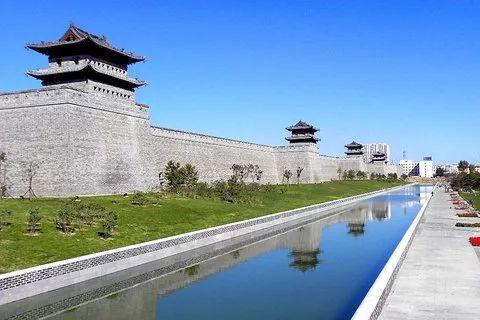
It is shocking to me that the walls remained as they were at launch.
And the new Malian walls shows that the developers are capable. So I’m left scratching my head as to why they haven’t gone ahead and updated walls for each civilization to properly represent their architecture and culture.
The placeholder walls we have needs to go.
I did write a post a few months ago about the placeholder walls that were applied to every Eastern civ in the game and how the devs could make them look appropriate to each and every one of those civs, here: "Eastern" civs' walls should be redesigned, for specificity and uniqueness!
I wish it had gotten more attention and that the devs would take a notice of it.
Would be nice if you and other people here helped it go up on the forums again, it might get into Relic’s radar.
Just wanted to update this thread with some findings from the content editor. They may not be actual stone walls like the ones depicted above, but at least they are a lot more fitting than the current ones in the game. Hoping these assets get utilized in the game again. So yea, heres some aptly named “Kiev Walls” from suppousedly the Rus campaign that never showed up, likely meant to be used as their Stone Walls (despite being wood. Maybe they had a different mechanic alltogether?).
English walls for size reference.
So yea, apparently they had different walls for Rus all along. Sad to see that they weren’t utilized. I’m guessing it is tied to how it blocks the view for units that can sit on top of it, but it should still show silhouettes so I don’t mind it personally.
More unique walls would be nice.
Those ones would be bad though. They are clearly wood which makes things inconsistent and unclear if they are the “stone” walls for Rus. Also, yeah the roof over them looks nice, but would be terrible functionally since it hides units on top.
Actually the image I uploaded makes me wonder if the Golden Gate was actually meant to be an actual gate-landmark just like Age 4 Chinese. You can kind of see how it’d attach relatively easily with the exception of roof tiles looking different. Though the lower roof tiles does seem to be at a similar height.
They probably made these walls pretty early on (before some kind of stylistic change?). Anyhow, I still think it’d be great flavour for Rus to have.
